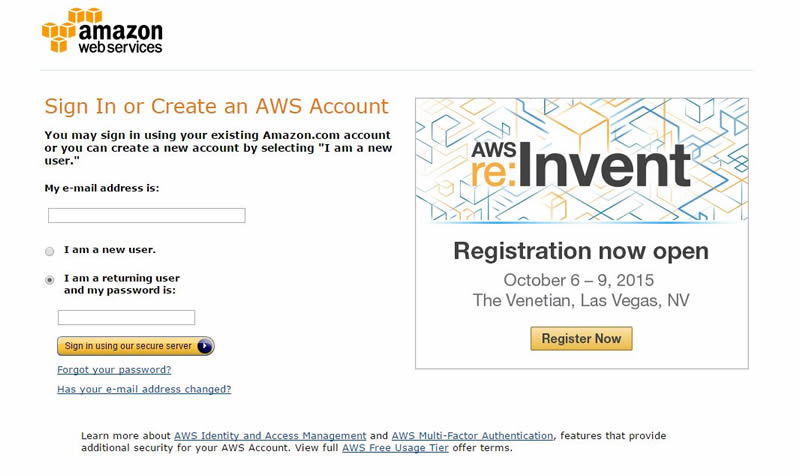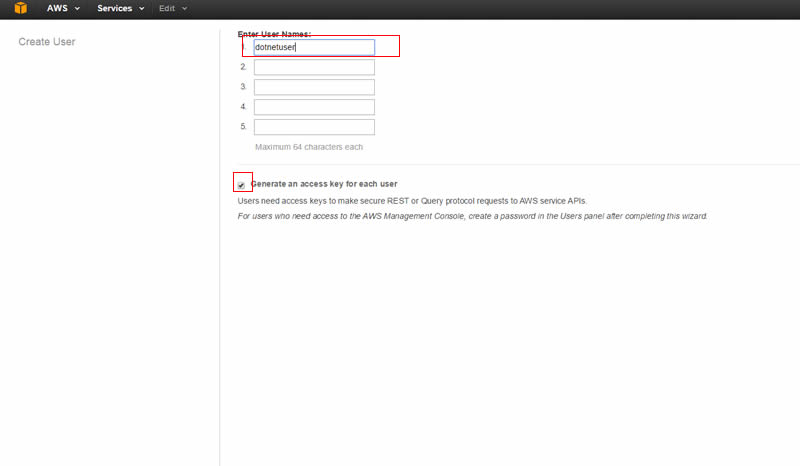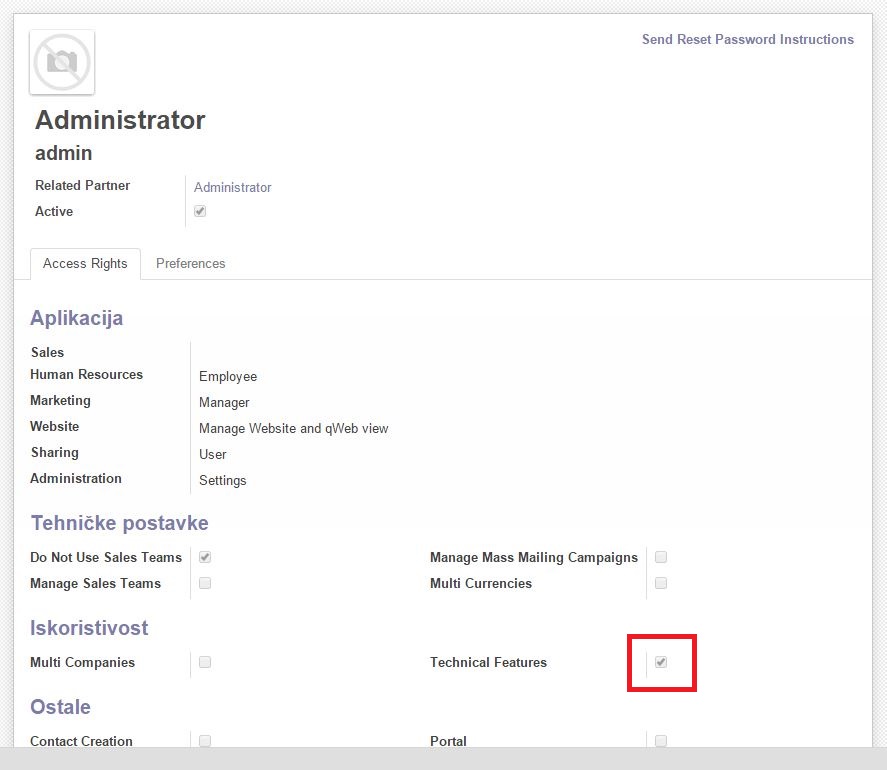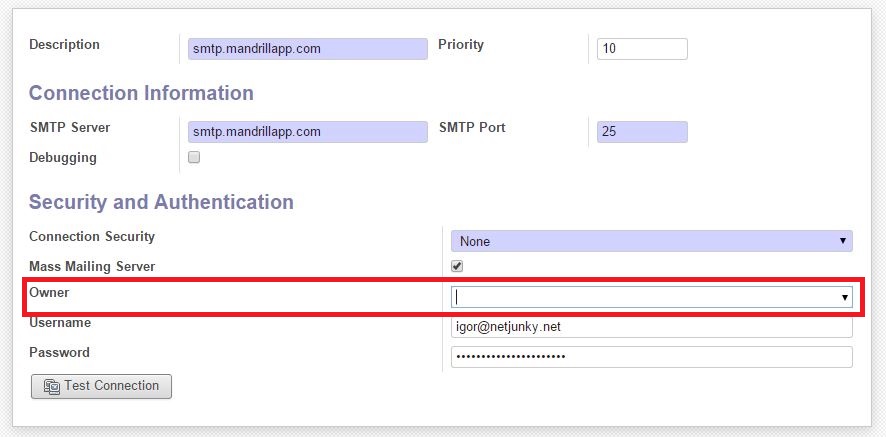by Igor | Jun 23, 2015 | Linux, Odoo, Programming
It is possible to work on the local computer (workstation) with Ubuntu, local virtual machine or in a server over the network.
I prefer to do the development work in my personal workstation, using my favorite text editor or IDE.
So this is my development setup:
VirtualBox + Ubuntu + PyCharm
VirtualBox works on Linux, Windows and OS X so i can move VM’s from one platform to another.
The assumption is that you have installed Ubuntu desktop.
You can download and install Ubuntu from this location:
http://www.ubuntu.com/download/desktop/thank-you/?version=14.04.2&architecture=amd64
You can download and install VirtualBox from this location:
https://www.virtualbox.org/wiki/Downloads
The Ubuntu installation process has already guided you in the creation of a user.
You will use that user to setup you development environment.
First, make sure you are logged in as the user created during the installation process, and not as root.
Assuming your user is netjunky:), you can confirm your home directory and user with the following commands:
echo $HOME
whoami
Now we can install Odoo directly from the GitHub repository and install our favorite IDE.
1.) Install system updates
sudo apt-get update && apt-get upgrade -y
2.) Install Git
sudo apt-get install git -y
3.) Install PostgreSQL Server
sudo apt-get install postgresql -y
4.) Install Python dependencies
sudo apt-get install python-dateutil python-feedparser python-ldap python-libxslt1 python-lxml python-mako python-openid python-psycopg2 python-pybabel python-pychart python-pydot python-pyparsing python-reportlab python-simplejson python-tz python-vatnumber python-vobject python-webdav python-werkzeug python-xlwt python-yaml python-zsi python-docutils python-psutil python-mock python-unittest2 python-jinja2 python-pypdf python-decorator python-requests python-passlib python-pil python-pip -y
5.) Create a directory to work in. This will create work directory for your projects ~/projects/odoo-dev
mkdir ~/projects
mkdir ~/projects/odoo-dev
6.) Go into our work directory
cd ~/projects/odoo-dev
7.) Get Odoo source code from gitub (-b option asks to explicitly download the 8.0 branch of Odoo)
git clone https://github.com/odoo/odoo.git -b 8.0
8.) Install Odoo system dependencies. Just one more check with odoo.py script. I did not bother to investigate but if you try to run this command before step 4. you will get errors about missing python dependencies.
./odoo/odoo.py setup_pg
9.) Create PostgreSQL superuser
./odoo/odoo.py setup_pg
10.) Install wkhtml and place on correct place for Odoo
sudo wget http://downloads.sourceforge.net/project/wkhtmltopdf/archive/0.12.1/wkhtmltox-0.12.1_linux-trusty-amd64.deb
sudo dpkg -i wkhtmltox-0.12.1_linux-trusty-amd64.deb
sudo cp /usr/local/bin/wkhtmltopdf /usr/bin
sudo cp /usr/local/bin/wkhtmltoimage /usr/bin
sudo rm -rf wkhtmltox-0.12.1_linux-trusty-amd64.deb
To start an Odoo server instance, just run odoo.py:
~/projects/odoo-dev/odoo/odoo.py
Odoo server is ready and we can now install PyCharm or some other favorite text editor or IDE.
To install PyCharm community edition:
sudo wget -q -O - http://archive.getdeb.net/getdeb-archive.key | sudo apt-key add -
sudo sh -c 'echo "deb http://archive.getdeb.net/ubuntu $(lsb_release -sc)-getdeb apps" >> /etc/apt/sources.list.d/getdeb.list'
sudo apt-get update
sudo apt-get install pycharm -y
Run PyCharm
cd /usr/share/pycharm/bin
./pycharm.sh
Or you can skip all the steps and run this script:)
https://gist.github.com/netjunky-hub/ac65b479fc4a306ae6bc
Make sure you are not using root (don’t use sudo to run the script).
WARNING!
Script will download and configure Odoo, remove Libre office and install Apache Open Office, install useful tools like meld, pgadmin3 and poedit, download and install Odoo templates for PyCharm, create directories for custom config and custom addons.
You can adjust script to fits your needs.
Happy coding:)
by Igor | Jun 18, 2015 | Odoo, Programming
When you’re developing custom module or working on Python code, Odoo server needs to be restarted on every code change.
To make your life easier auto reload Odoo server after Python code change.
Option –auto-reload monitors the source code and automatically restart Odoo server if changes are detected.
Example of usage:
./odoo.py -d test_database --auto-reload
This is a Linux-only feature.
The pyinotify Python package is required, and it should be installed either through apt-get or pip:
Using apt-get:
sudo apt-get install python-pyinotify
Using pip:
pip install pyinotify
https://github.com/seb-m/pyinotify/wiki
Warning:
If you use PyCharm or some other IDE with auto save, disable auto save before using –auto-reload option.
Happy coding…
by Igor | Jun 12, 2015 | Programming
I’ve recently had to query the status of EC2 instances and then be able to controlling them as required.
1.) Create Amazon free account or use your existing Amazon AWS account.

2.) Create new user for your application (for example dotnetuser).
Select Your Accoutnt / Security Credentials from main menu and create new user.

Don’t forget to save access key id and secret key.
You will use them to connect to AWS.

3.) Download and install AWS SDK for .NET.
More info about AWS SDK:
http://docs.aws.amazon.com/AWSSdkDocsNET/latest/DeveloperGuide/net-dg-setup.html
4.) You are ready to write code. Create blank console application and add reference to AWS SDK.
AWS SDK is installed usually on this location:
C:\Program Files (x86)\AWS SDK for .NET\bin\Net45
Required usings:
using Amazon;
using Amazon.EC2;
using Amazon.EC2.Model;
using Amazon.SimpleDB;
using Amazon.SimpleDB.Model;
using Amazon.S3;
using Amazon.S3.Model;
using Amazon.Runtime;
Copy this code into you Main function and change credentials with yours:
Amazon.Util.ProfileManager.RegisterProfile("dotnetuser", "access_key_id", "secret_key");
AWSCredentials credentials = new StoredProfileAWSCredentials("dotnetuser");
Using RegisterProfile can cause runtime problems (Thanks to Pavel Safronov)
http://blogs.aws.amazon.com/net/post/Tx3VJIHQF8Q0YSX/RegisterProfile
You can access your profile by specifying it in app.config/web.config file
<configuration>
<appSettings>
<add key="AWSProfileName" value="profile-name"/>
</appSettings>
</configuration>
Or explicitly
var credentials = new Amazon.Runtime.StoredProfileAWSCredentials("profile-name");
Define region and create EC2 client:
RegionEndpoint re = RegionEndpoint.USWest2;
IAmazonEC2 ec2 = AWSClientFactory.CreateAmazonEC2Client(credentials,re);
DescribeInstancesRequest ec2Request = new DescribeInstancesRequest();
//This code will start your EC2 instance.
StartInstancesRequest startRequest = new StartInstancesRequest();
//change instance id
startRequest.InstanceIds.Add("i-4d2213bb");
ec2.StartInstances(startRequest);
//This code will stop your EC2 instance.
StopInstancesRequest stopRequest = new StopInstancesRequest();
//change instance id
stopRequest.InstanceIds.Add("i-4d2213bb");
ec2.StopInstances(stopRequest);
That’s all folks!
by Igor | May 2, 2015 | Odoo, Programming
Configure Odoo smtp server per user with #netjunky mail_server module.
You can still use other mail servers for mass mailing and system messages.
Setup is simple.
1) Make sure to check the technical features box for administrator user.
Settings/Users/Administrator/Technical Features
You can use #netjunky module company_setup for initial company setup.
This module will check the technical features box for administrator user automatically during installation.

2) Download and install mail_server module
4) Add new mail server or change existing.
Settings/Email/Outgoing Mail Servers
5.) Choose user from the owner menu

Related articles:
http://netjunky.net/odoo-mass-mailing/
Github repository:
https://github.com/netjunky-hub/mail_server
by Igor | Apr 30, 2015 | Odoo, Programming
With #netjunky mail_server module Odoo mass mailing server can be different from default Odoo mail server.
This kind of functionality allows you to setup one mail server for everyday use and the other for mass mailing.
If document model is mail.mass_mailing.contact email is sent through mass mailing server.
You can use for example mandrill (first 12,000 emails per month are always free) or other transactional email service for mass mailing.
Usage of mail_server module is very simple.
1) Make sure to check the technical features box for administrator user.
Settings/Users/Administrator/Technical Features
You can use #netjunky module company_setup for initial company setup.
This module will check the technical features box for administrator user automatically during installation.
2) Download and install mail_server module
3) Add new mail server for mass mailing or change existing.
Settings/Email/Outgoing Mail Servers

Related articles:
http://netjunky.net/odoo-smtp-server-per-user/
Github repository:
https://github.com/netjunky-hub/mail_server
by Igor | Apr 20, 2015 | Hosting, Programming
To redirect web traffic with Cloudflare and ASP.NET first enable IP Geolocation in CloudFlare dashboard:

Related article:
http://netjunky.net/redirect-web-traffic-based-on-country-origin/
To learn more about Cloudflare visit there website:
https://www.cloudflare.com/overview
Once enabled, Cloudflare will then add a header called “CF-IPCountry” to all requests to your website.
In your ASP.NET website code capture that header and redirect traffic.
This can be done on single page or globally in global.asax file.
Code example:
if (Request.Headers.AllKeys.Contains("CF-IPCountry"))
{
Response.Write(Request.Headers["CF-IPCountry"]);
}
Read header and save result in session to use it globally.
Add this code snippet to your global.asax file:
protected void Session_Start(object sender, EventArgs e)
{
if (Request.Headers.AllKeys.Contains("CF-IPCountry"))
{
Session["language"] = Request.Headers["CF-IPCountry"].ToString();
}
}
That’s all folks!








Recent Comments